The rare, special gift of Leonardo da Vinci
Who was Leonardo da Vinci?
Leonardo da Vinci (1452 – 1519) was an Italian man who lived in the time of the Renaissance. Above all, he is famous for his paintings. But he was also a scientist, mathematician, engineer, inventor, anatomist, sculptor, architect, botanist, musician, and writer. In other words, the rare, special gift of Leonardo da Vinci was his extraordinary talent for such diverse fields. This made him one of the greatest humanists of all time.
Leonardo wanted to know everything about nature. He wanted therefore to know how everything worked. He was very good at studying, designing and making all sorts of interesting things. So, what was what made him so special, so talented and so gifted?
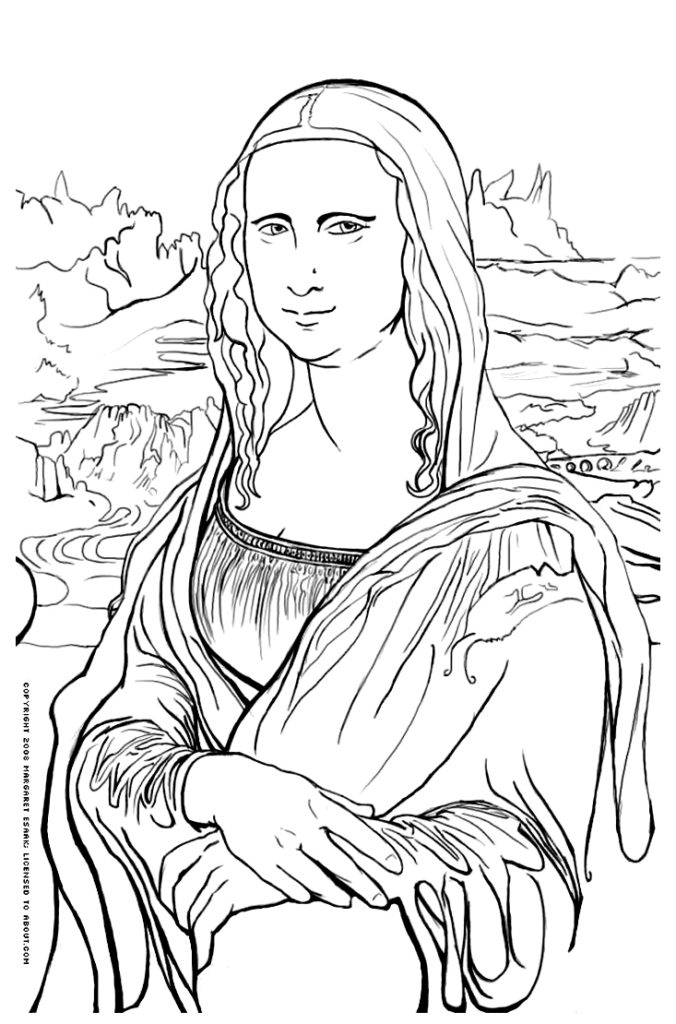
18 Fun Facts
- Leonardo was a tall man standing around 6 feet and 6 inches.
- He was left-handed.
- Leonardo was a vegetarian, and as a young man, he often purchased caged birds just to release them from captivity.
- He was a pacifist, even though he designed some of the most horrific killing machines for the military.
- Leonardo had a gift for following his natural insatiable curiosity.
- He wrote in a mirror image, from right to left.
- Leonardo rare, special gift made him get fascinated with nature and especially birds and the concept of flight.
- To quench his thirst for knowledge, he needed money. This explains his constant search for patrons or commissions to pay for his living.
- He was never a rich man. Many pages in his codices have scribbled budgets where Leonardo calculated to make ends meet.
- His friends included Machiavelli and Botticelli.
- Leonardo and Michelangelo were fierce rivals and despised each other.
- He aimed to perfect his art to reflect the image and the soul of his subjects.
- There are very few fully authenticated artworks of Leonardo da Vinci on display around the world. For some reason, as a rule, he did not sign his paintings.
- Wealthy members of nobility often employed him to produce stage shows with special effects and fireworks.
- He preferred the company of men and was arguably gay.
- Two years before he died he suffered a stroke that affected the right side of his body.
- Much of what Leonardo started he never finished. This became one of his biggest criticisms by his critics and academics.
- Leonardo spent his final years in France, next to King François I, in the Château du Clos Lucé.
“Learning never exhausts the mind.”
LEONARDO DA VINCI


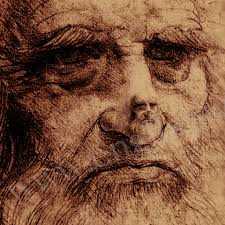
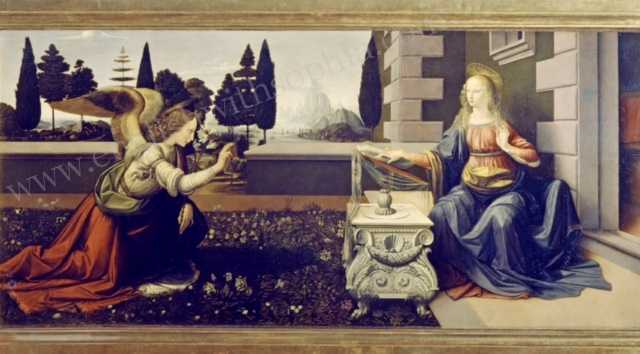
About Leonardo
Early Years
Leonardo was born near the Tuscan hill-town of Vinci. Being an illegitimate child, his paternal grandfather raised him. His father had a flourishing legal practice in Florence, where Leonardo received his early artistic training with the sculptor Andrea Verrocchio.
Verrocchio’s workshop undertook a wide range of commissions including sculpture and decorative metalwork as well as paintings.
Frustrated in Florence
By 1472, Leonardo had joined the brotherhood of Florentine artists, the Compagnia di San Luca. So, he worked in Florence for the next ten years, but few paintings survive.
Leonardo made numerous drawings, however, which revealed his growing interest in other disciplines, including geometry, anatomy, and engineering.
By 1483, Leonardo felt stifled and decided that Milan would offer more exciting opportunities. He then wrote to the ruling family, the Sforzas, asking for employment because he was an expert in military engineering. He mentioned his skill in painting and sculpture as a bonus. Soon after his move to Milan, a confraternity commissioned an altarpiece, and Leonardo created ‘The Virgin of the Rocks’.
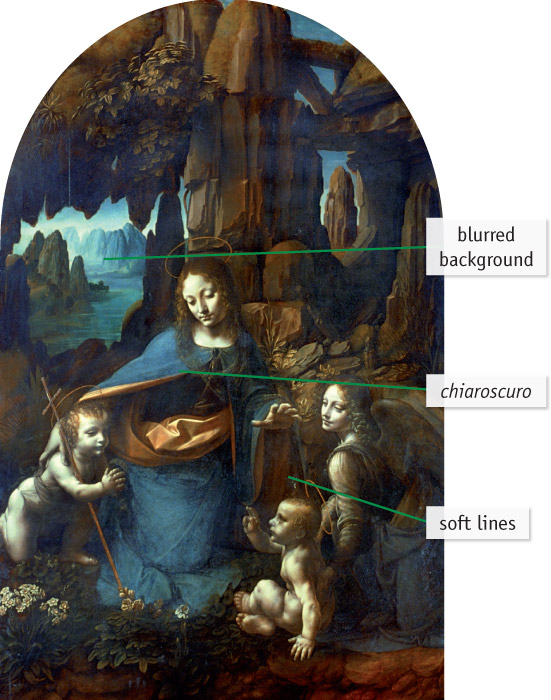
When they refused to give what he considered a fair price for the painting, he sold it to someone else in disgust. As a result, it was some years before the confraternity persuaded him to do a second version – the one that now hangs in the National Gallery.


The notebooks
Leonardo kept notebooks of his research into science, biology, anatomy, engineering, and art. He was particularly keen on flying machines, and came up with a design for a type of helicopter, although he never built it.
Leonardo filled his books with drawings and diagrams, covered them with notes written in mirror handwriting, and kept them for the rest of his life.
Leonardo’s major artistic achievement at this time was ‘The Last Supper’, which he painted for the wall of the refectory of Santa Maria della Grazie. ‘The Last Supper’ perfectly illustrates Leonardo’s belief that poses, gestures, and facial expressions should reflect the ‘motions of the mind’.
Milan, Rome, and France
In 1499 the French army invaded Milan and Leonardo returned to Florence. The mystery of the face and the possibility of reading the ‘motions of the soul’ through facial expressions fascinated him. No wonder Leonardo’s portrait of the wife of a Florentine official, worldwide known as the ‘Mona Lisa’, is famous for its sitter’s enigmatic expression.
Leonardo soon tired of Florence however, and by the summer of 1508, he was back in Milan, working for the French rulers of the city. He began work on a series of compositions of the Virgin and Child. Before beginning a painting, he would work out his composition in a drawing – the famous Burlington House Cartoon is a preparatory work for a painting now in the Louvre, Paris.
This second period in Milan lasted until 1513 and later he spent three years in Rome. During this period the French king offered him employment as ‘first painter and engineer’ at the royal court. Leonardo accepted the offer and in 1517 he moved to the Chateau of Cloux, near Amboise, where he spent the rest of his life.
Final years
Towards the end of his life, Leonardo was very ill and a stroke left him paralyzed down the right side of his body. Despite this, his notebooks reveal that he was surprisingly active, though it is likely that his assistants carried out most of the physical work. However, his mood deteriorated and he was dogged by a persistent and overwhelming sense of pessimism.
He became increasingly obsessed with his experiments and scientific projects. These interfered with his artistic commissions and he became even more notorious for not finishing anything. He completed so few works in his lifetime that a whole industry sprang up around the search for ‘real Leonardos’ with many copies parading as originals.
In April 1519 Leonardo, now 67, drew up his will. He left most of his works to his adored pupil and companion, Francesco Melzi. He died later that year and was buried in Amboise. The gift of Leonardo da Vinci will be remembered in the years to come.


Related sites to find out more
If you ever take a trip to Paris, you can see the Mona Lisa hung in the Louvre gallery – one of the world’s most famous paintings.
Visit the Museum of Science and understand why Leonardo is known for his dramatic and expressive artwork such as The Mona Lisa, The Last Supper, or The Annunciation.
Explore The Last Supper and have a close look at this eight-meter-wide painting. It depicts the part of the Bible where Jesus announces at dinner that one of his 12 loyal supporters (disciples) will betray him.
Play the game Inside the Amazing Mind of Leonardo da Vinci, and understand his special talent as an artist, engineer and scientist.
Just for fun…
- Leonardo Da Vinci has left a coded message – use the key to see if you can crack it!
- Find out about the human heart’s anatomy using Leonardo’s drawings in an interactive game. This talent at drawing with such fidelity to real life has made him go down into history as one of the most gifted Renaissance men.
- Hear the Mona Lisa sing her story in a Horrible Histories song
- Colour in Da Vinci’s famous Mona Lisa
- Which of Leonardo’s flying machines will fly like a bird or sink like a stone? Find out in this online game
- Leonardo da Vinci produced the first anatomy drawings of human muscle and bones; make his skeleton drawings dance by answering quiz questions
- Find out about what went on inside the head of “the most curious man who ever lived” in an interactive game
- Explore Leonardo da Vinci’s studio and find 12 objects in it
- Play a game to understand the grid structure and rules Leonardo used to help him when drawing heads and faces
- Be inspired by Leonardo to create your own flying machine
- Make your own Leonardo da Vinci paper glider
- Try some Leonardo-inspired activities: mirror writing, drawings with perfect linear perspective, inventing gadgets, and more
- Download Leonardo Da Vinci activity sheets and worksheets to help you learn how to draw like Leonardo
Find out more
- Listen to (an actor playing) Leonardo talk about his passion for drawing and his ideas for flying machines!
- Read the Kiddle Encyclopaedia entry about Leonardo Da Vinci
- Look at Leonardo’s anatomical drawings, including his pictures of babies
- Find out more about this amazing artist, inventor, and scientist in Boston’s Museum of Science Leonardo micro-site
- See the notebooks where Leonardo drew his designs for the aeroplane, the helicopter, the parachute, the submarine, and the car. You can even “turn the pages” of Leonardo’s notebook online yourself!
- 150 models of Leonardo’s inventions exhibit in Italy, but you can see them online too
- Look at some of Leonardo’s drawings
- Watch a video lesson about Leonardo and his life and work
- Discover the amazing work of Da Vinci with Dick and Dom
- Details of Leonardo’s most famous paintings, including the Mona Lisa and The Last Supper
- Watch a slideshow of 17 of Leonardo’s paintings
- See the Mona Lisa up close in a virtual look tour of the painting
- Watch an animation about the theft of the Mona Lisa in 1911
- Find out more about some of Leonardo’s amazing inventions: driverless vehicles, human-like robots, and even the primitive computer
- Short films about Leonardo the polymath and his drawings
See for yourself
- Visit London’s National Gallery to see Da Vinci’s impressive The Virgin of the Rocks (the second version he painted) or look at images of it on the museum’s website
- Be inspired by Da Vinci’s notebooks, five of which are in London’s V&A Museum.
- If you ever take a trip to Paris, you can see the Mona Lisa hung in the Louvre gallery – Da Vinci’s and arguably one of the world’s most famous paintings.
- A full-length statue of Da Vinci stands outside the Uffizi Gallery in Florence, Italy, and there is a room inside dedicated to some of his early work.
- There is a museum dedicated to Leonardo Da Vinci in Milan, Italy
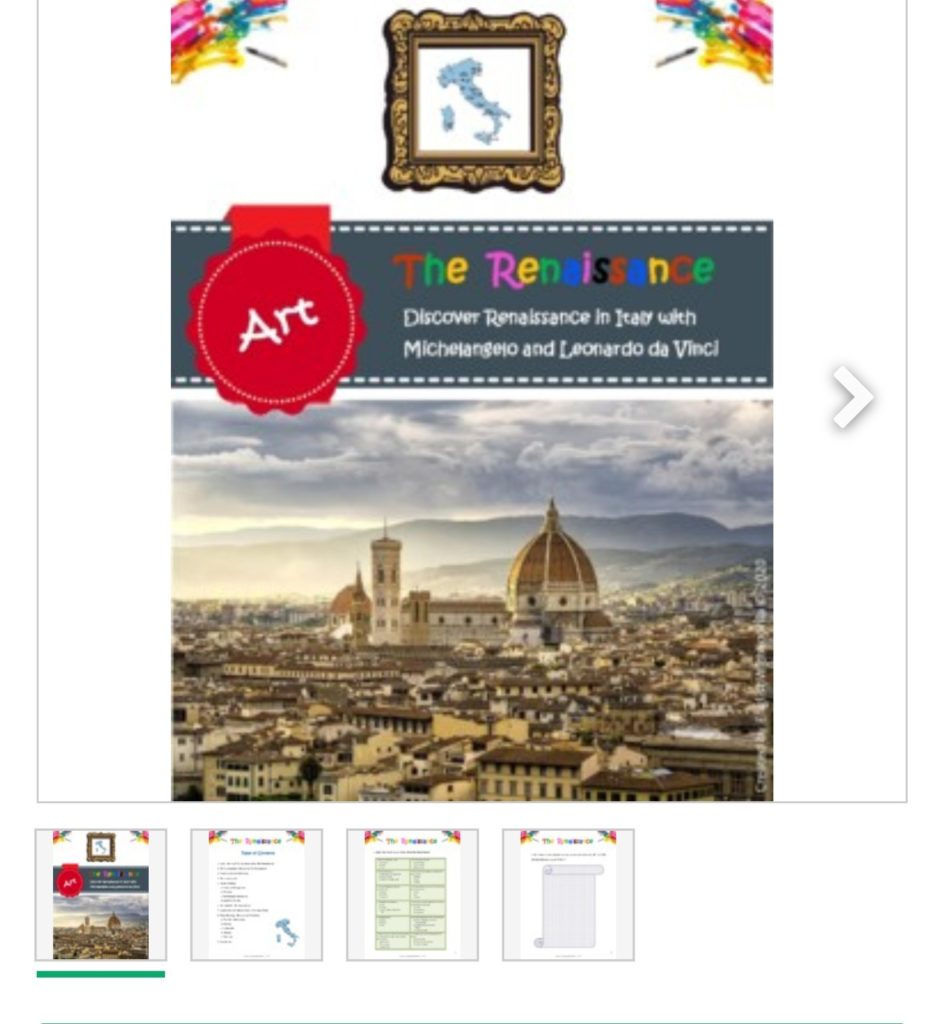
Learn more about art in The Magic Fun Art Quiz, El Prado Museum Enchanted Paintings Come to Life, Berthe Morisot’s Sketchbook Activity or Iconic Banksy: Love him or Hate him!



Comments are closed